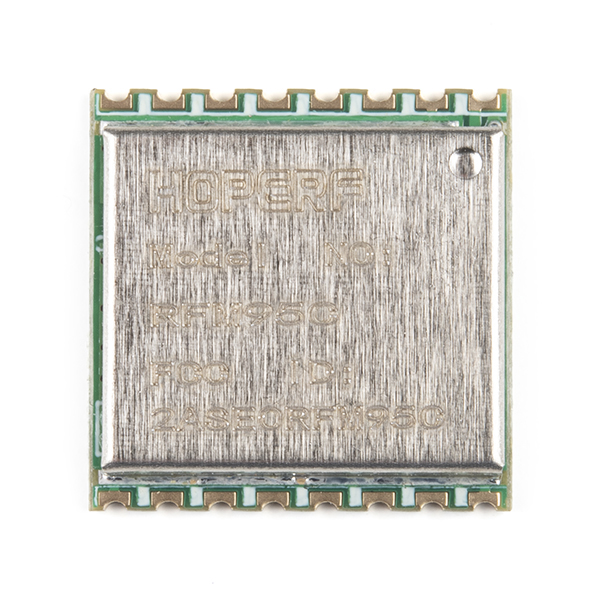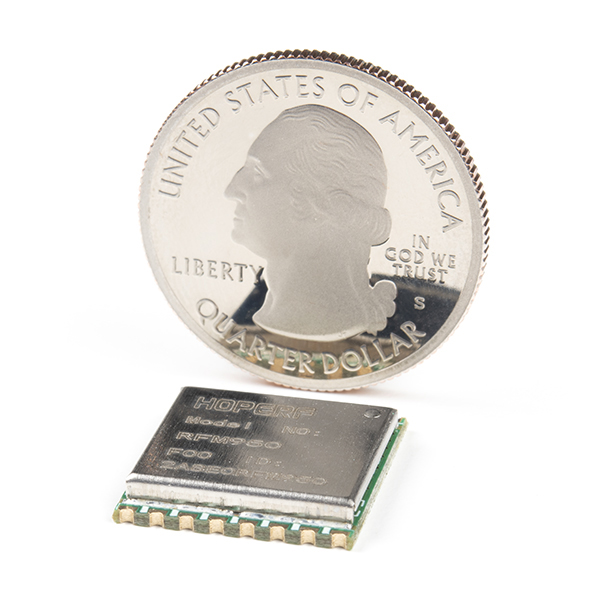RFM95CW is an ultra-low-power, high-performance LoRa transceiver for various frequency of 137-1020 MHz wireless applications. The high integration of RFM95C simplifies the peripheral materials needed in the system design. The sensitivity up to - 148 dBm which can optimize the link performance of applications. In addition, RFM95CW also supports Duty-Cycle operation mode, channel interception, high-precision RSSI, power-on reset, noise output and other more functions, which makes the application design more flexible thus to achieve product differentiation design. The working voltage of RFM95CW is 1.8V~3.7V. When the sensitivity is reaching -148 dBm, it only consumes 9.9 mA current. This ultra-low power mode can further reduce the power consumption of the chip.
- Frequency Range: 137~1020MHz
- Modulation: LoRa
- Data Rate: 0.018~37.5 kbps
- Sensitivity: -123 dBm , BW=12KHz, SF=12
- Voltage Range: 1.8~3.7 V
- Receiving Current: 12.5 mA @ BW=125KHz
- Supports Ultra Low Power Receiving Mode
- Sleeping Current
- 160 nA, Duty Cycle = OFF
- 600 nA, Duty Cycle = ON
- 4-wire SPI Interface
- Supports Full-automatic Independent Working Mode
LoRa Transceiver Module (RFM95CW) Product Help and Resources
Core Skill: Soldering
This skill defines how difficult the soldering is on a particular product. It might be a couple simple solder joints, or require special reflow tools.
Skill Level: Competent - You will encounter surface mount components and basic SMD soldering techniques are required.
See all skill levels
Core Skill: Programming
If a board needs code or communicates somehow, you're going to need to know how to program or interface with it. The programming skill is all about communication and code.
Skill Level: Competent - The toolchain for programming is a bit more complex and will examples may not be explicitly provided for you. You will be required to have a fundamental knowledge of programming and be required to provide your own code. You may need to modify existing libraries or code to work with your specific hardware. Sensor and hardware interfaces will be SPI or I2C.
See all skill levels
Core Skill: Electrical Prototyping
If it requires power, you need to know how much, what all the pins do, and how to hook it up. You may need to reference datasheets, schematics, and know the ins and outs of electronics.
Skill Level: Competent - You will be required to reference a datasheet or schematic to know how to use a component. Your knowledge of a datasheet will only require basic features like power requirements, pinouts, or communications type. Also, you may need a power supply that?s greater than 12V or more than 1A worth of current.
See all skill levels
Comments
Looking for answers to technical questions?
We welcome your comments and suggestions below. However, if you are looking for solutions to technical questions please see our Technical Assistance page.
Customer Reviews
No reviews yet.




